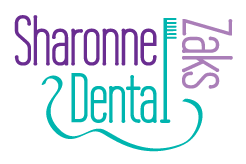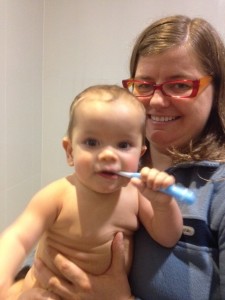oral hygiene
Keeping your teeth for life is now a realistic possibility that is largely under your control. Great dental health is achieved with a combination of dental care at home and regular visits to the dentist.
bvvvvvvvv
Why bother cleaning the teeth?
b
The biggest threat to the teeth is plaque, a coating of bacteria that develops on your teeth daily. Plaque bacteria are responsible for releasing acids that cause cavities (caries) in teeth. They also cause the gum infections gingivitis and the more serious periodontitis (see section about this on this website). Thich can result in tooth loss after the bone and tissues holding the teeth in the jaw are destroyed. If you need more inspiration, plaque is the main cause of bad breath and can have other general health risks if left.
b
Where does plaque live?
b
There is a small amount of loose gum that hangs over the teeth. Plaque collects just under this gum collar on the tooth. It is largely flushed off the smooth surfaces of the teeth by saliva so all efforts need to be directed to the gum-tooth junction.
b
There are two kinds of plaque: soft and hard
b
Initially plaque collects as a soft deposit, only lightly stuck on the teeth. Within 24-36 hours, plaque takes up saliva mineral and hardens into a rocky deposit like a barnacle called tartar or calculus. This cant be removed with a toothbrush or floss and needs a dentist to clean it. Your home cleaning efforts delay the collection of this hard plaque if you can remove it while it is still soft.
People recollect calculus at different rates; on average every 6 months it is necessary for a dentist to remove this hard plaque.
People recollect calculus at different rates; on average every 6 months it is necessary for a dentist to remove this hard plaque.
b
What is the correct way to brush?
b
-Direct the bristles at a 45 degree angle to the teeth so they are pointing under the gum. You should feel half of the brush on the tooth and half on the gum.
-Use very gentle pressure only. Your brush should last 3-5 months before fraying or wearing out. Any heavy pressure or scrubbing can cause the delicate gums to recede and the underlying enamel to be worn away and must be avoided. Extra pressure wont remove more plaque anyway.
-Use a very small jiggling action on the spot, one tooth at a time rather than a big action that covers several teeth at once.
-Spend long enough: at least 3-5 minutes are required to do a thorough job. 3-5 seconds per tooth surface should build up this time. You dont need to stay in the bathroom the whole time and it often helps to listen to music or time yourself to get a feel for the time involved.
-Mix up your brushing pattern. This avoids overbrushing of the first area and rushing the last section. Try starting in different places and work your way around all the surfaces, especially the hard to reach back areas.
b
What type of toothbrush should I use?
b
-A soft or extra soft bristled brush is best.
-A small head is best as it accesses all areas of the mouth more easily, especially the harder to reach back regions.
-A recharegeable electric brush has been shown to remove up to double the plaque compared to manual hand brushes and are very widely recommended.
-It is worth discussing what is best for you in person in the surgery depending on your unique situation. There are many options available.When should I replace my toothbrush?
-When the bristles begin to show wear or fray. Research has shown that worn brushes dont remove plaque effectively.
-Generally every 3-5 months
-After you have had a cold as the bristles collect the germs
b
Why bother flossing?
b
Flossing is equally as essential as brushing to do twice a day. It removes plaque from in between the teeth, where the toothbrush can’t reach. If you don’t floss, you are missing cleaning around half of your mouth! It’s like having a shower and only washing the same half of your body every day. One of the main places decay occurs is in between the teeth, so studies have shown that flossing reduces the risk of decay by around 50%.
b
How do I floss?
b
This takes practice in the mirror and patience to learn and then becomes very quick and easy. When you feel the difference in your mouth you will want to keep it up.
-Take around 30cm of floss
-Wrap it around the tips of either your index or middle fingers, leaving only about 1-2cm between your hands
-Place your fingers as close to the teeth as possible, which gives you the most control
-Slide the floss between the teeth very gently, avoiding any snapping down onto the gums.
-Wipe the side of the tooth in a gentle up and down motion. It is essential to go gently under the gumline where the plaque lives. Lean the floss against the neighbouring tooth and repeat, wiping from base to tip 2 or 3 times. Both sides of every tooth need to be flossed, including the backs of the molars.
-Go to a new section of the floss for each tooth to avoid transferring plaque between the teeth.
-Rinse with water after flossing to flush the loosened plaque and food particles out.
-Go to a new section of the floss for each tooth to avoid transferring plaque between the teeth.
-Rinse with water after flossing to flush the loosened plaque and food particles out.
b
Other cleaning tips
b
-Studies show it doesnt matter whether you brush or floss first.
-You dont have to brush and floss at the same time if that makes it easier to do them both.
-Gums often bleed when you first begin to floss as this is a sign the gums are inflamed. The bleeding stops when the gums heal, which usually takes 1-2 weeks of careful cleaning, so dont hold back and avoid cleaning if you note bleeding. It actually needs more attention. If the bleeding doesnt stop you need to come in for a visit.
-Floss can shred if you snag it on a rough filling or edge of a tooth. If this happens in a spot consistently it is worth coming into the surgery for an appointment as you may have decay or the need to replace a filling.
b
Other options for cleaning in between your teeth
-Floss can shred if you snag it on a rough filling or edge of a tooth. If this happens in a spot consistently it is worth coming into the surgery for an appointment as you may have decay or the need to replace a filling.
b
Other options for cleaning in between your teeth
b
You can try various types of floss or dental tape until you find what works best for your mouth. If flossing is too difficult there are also preconnected floss forks called ‘flossetes’ or an excellent jet brush device called an ‘air flosser’as an alternative to flossing. There are bottle brushes of varying size called ‘tepe’ or ‘pikster’ brushes which suit larger spaces that are not cleaned adequately with floss. We can discuss all the options in person; there are many tools available!
b
Cleaning your tongue
b
A very large number of bacteria in the mouth are found on the surface of the tongue. These bacteria are one big cause of bad breath; they get trapped in the grooves and ridges on the tongue. Cleaning the tongue also enhances your sense of taste and stimulates your organs.
The best way to remove the bacteria is to scrape them off.
The best way to remove the bacteria is to scrape them off.
-Obtain a tongue cleaning tool or you can use a spoon turned upside down
-Pass the scraper from the root to the tip of the tongue gently
-Rinse off the residue from the tool and continue until you have worked over your whole tongue
-It is important to do it gently; hard pressure wont help or speed up the process.
-Once a day is sufficient and the best time to do it is on waking in the morning.
b
Mouth rinsing
b
There are so many products with different applications that the best way is to discuss this in person depending on your particular situation. There are short and long term rinses, fluoride and disinfecting rinses or varying strengths and mouth rinsing is not necessary for everybody.
One essential piece of advice is to avoid the use of alcohol containing mouth rinses. These dry out the mouth and if used long term, can increase the risk of developing oral cancer.

